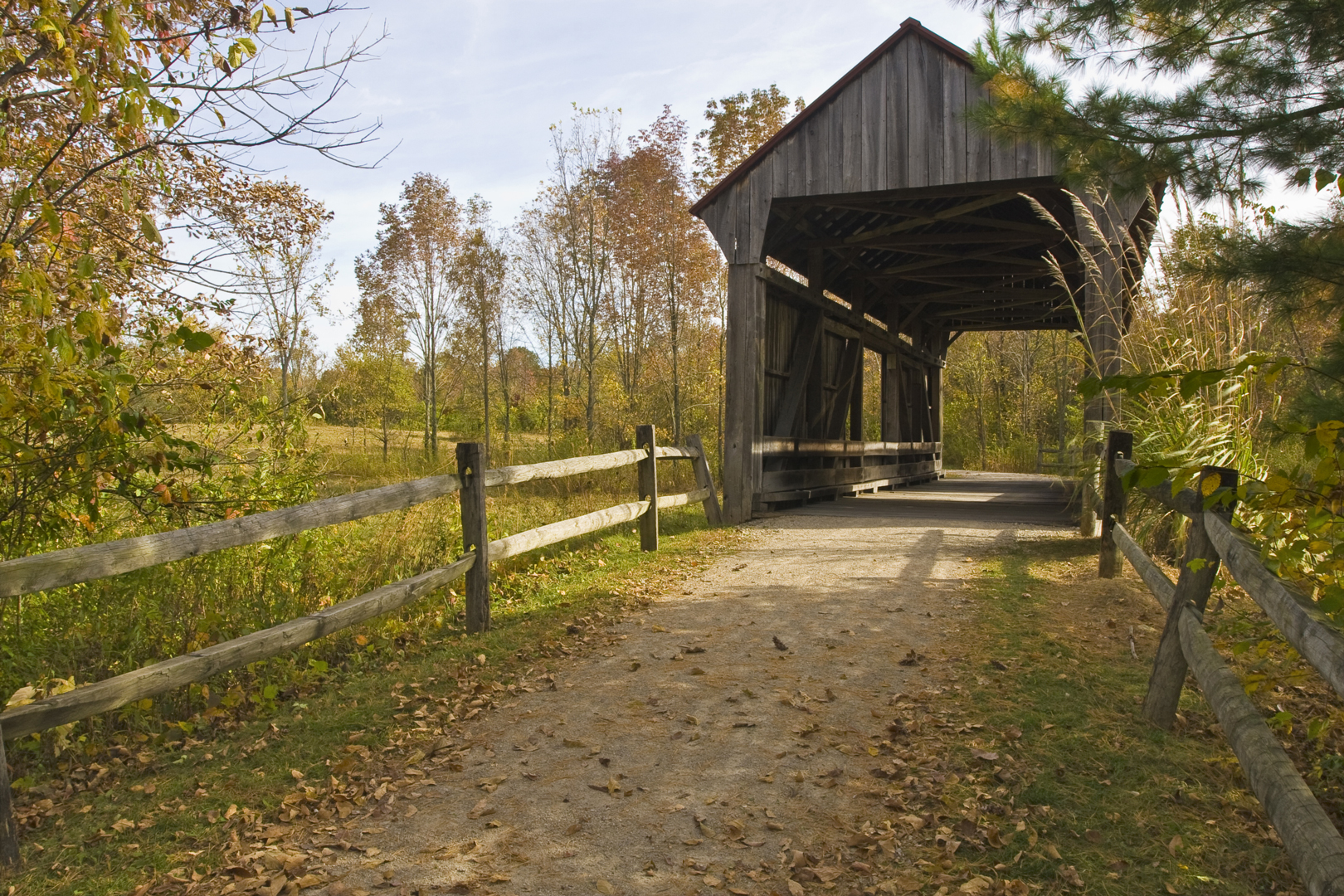
The Covered Bridge
Embodying a simpler time in American life, wooden covered bridges like the Blackburn/Wesner Bridge at Slate Run Metro Park began springing up across the country in the early 1800s. The Blackburn/Wesner covered bridge cost $378 when it was built in 1885. The 56-foot bridge initially spanned Brannon’s Fork near Young Hickory in Muskingum County and was moved in 1967 because the area was strip mined. Arthur Wesner purchased the bridge in 1967 and reassembled it on his land along Big Run in Franklin Township.
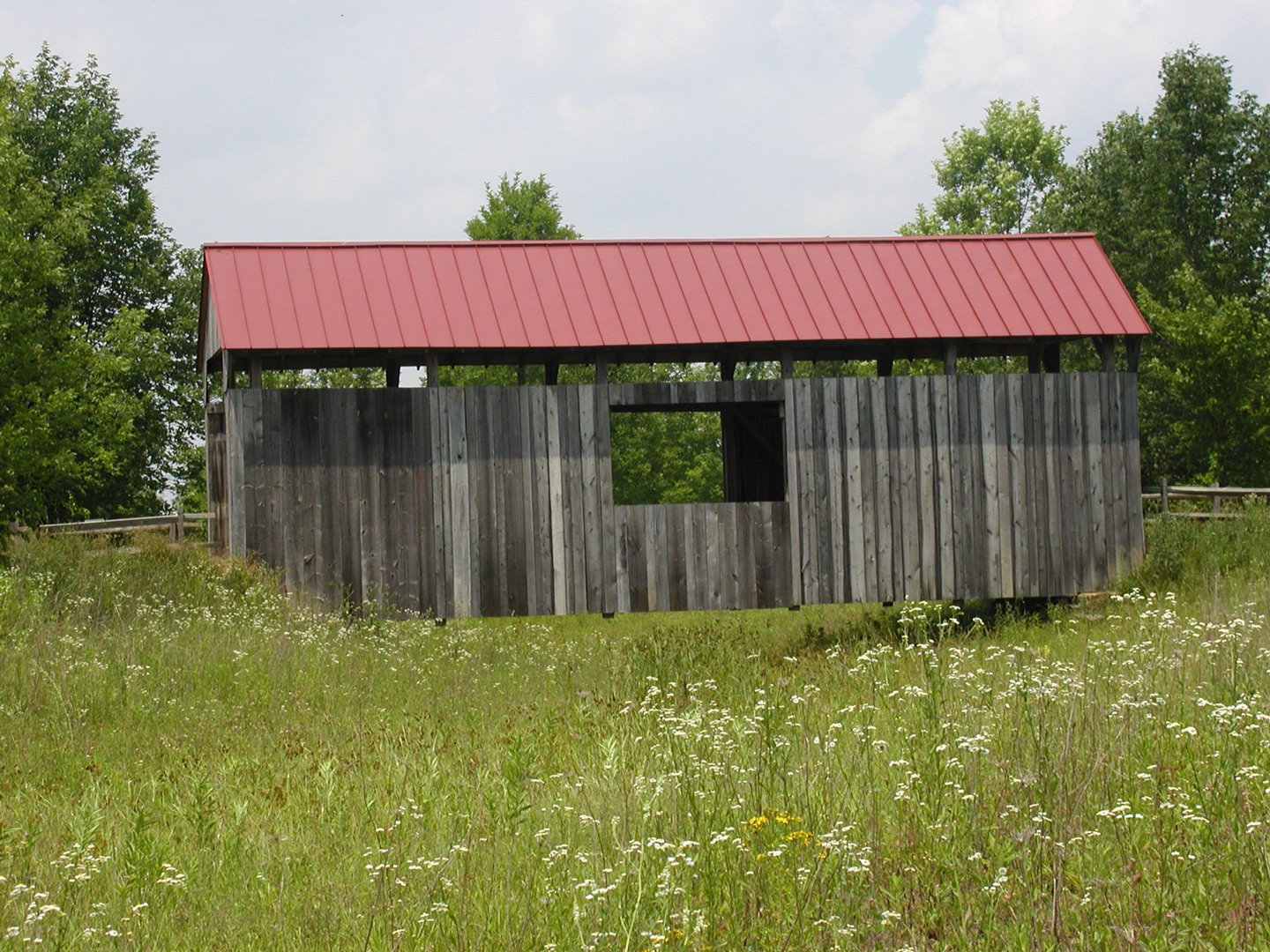
In 1998, the bridge was donated to Metro Parks and once again dismantled, moved and reassembled at Slate Run Metro Park. Blackburn Bridge is of the multiple kingpost truss type, the most common type in Ohio. The bridge is located on the half-mile Covered Bridge Trail and can be seen from the roadway back to the Buzzard’s Roost Picnic Area.
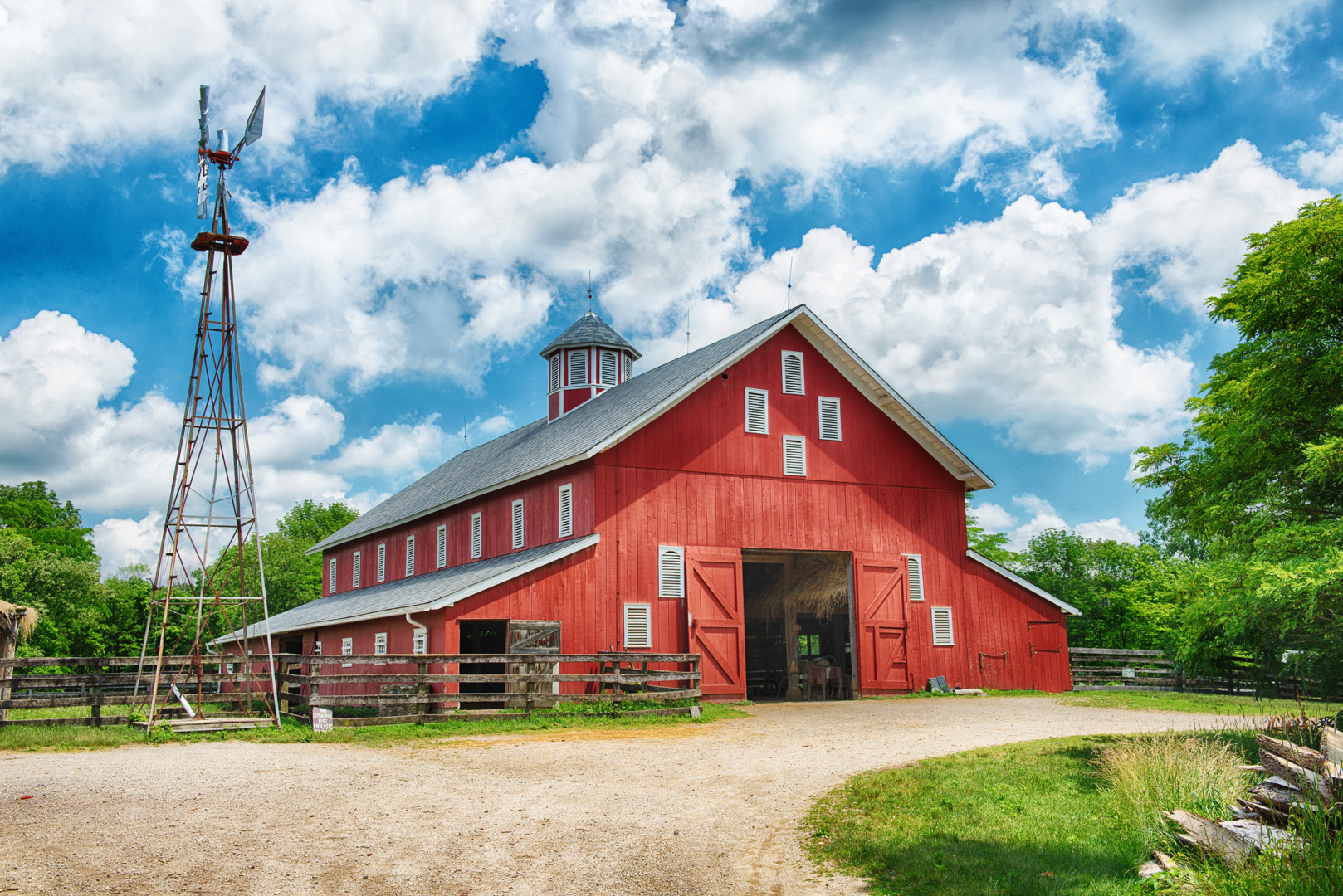
Most of America’s covered bridges were built between 1825 and 1875. An uncovered bridge could last about 20 years while a covered one could last up to a century. More than 12,000 covered bridges once dotted the American landscape, with about 3,500 in Ohio.
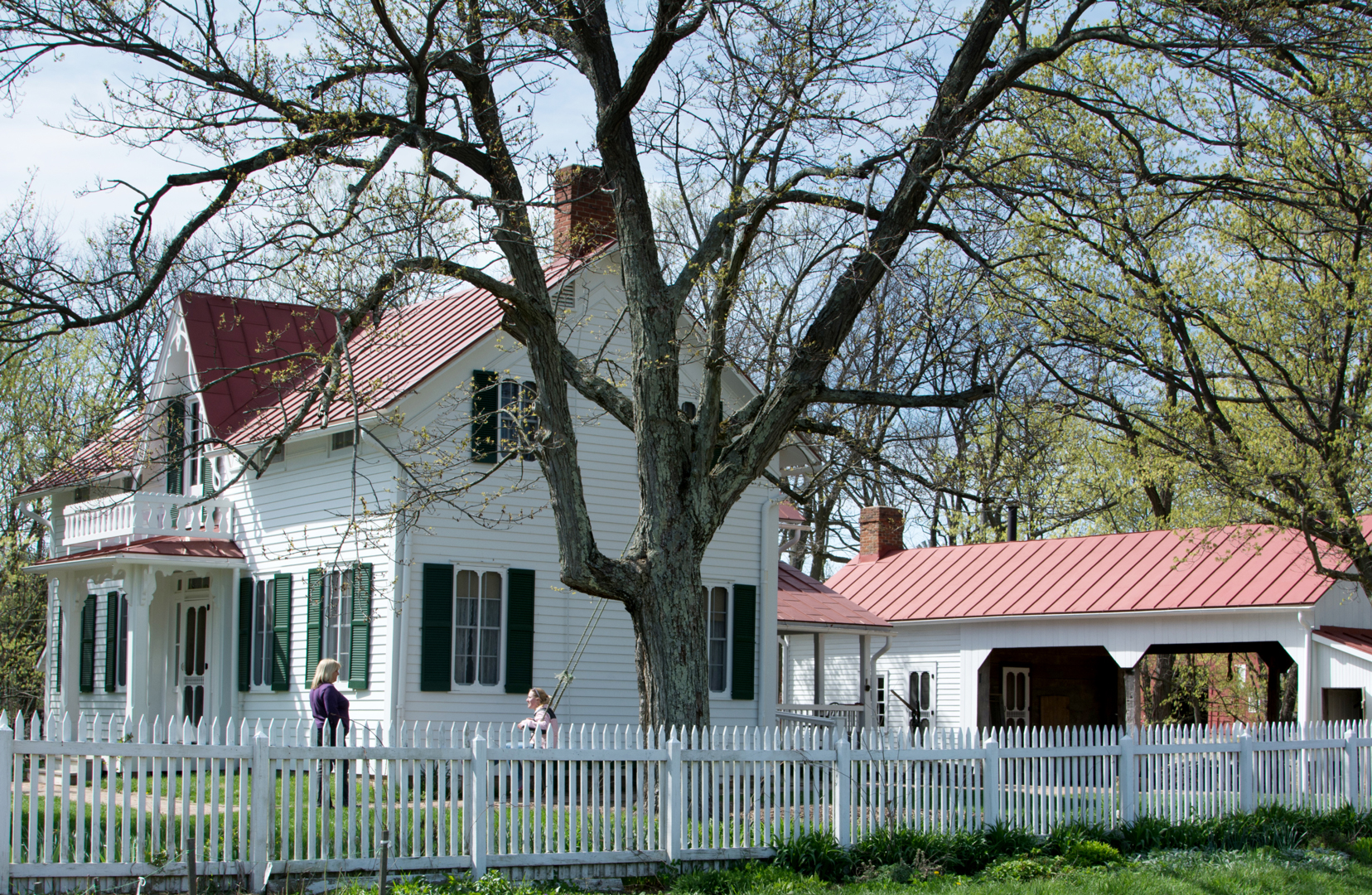
Covered bridges were sometimes nicknamed “kissing bridges,” as the cover allowed seclusion for couples to do a little making out. Practicality inspired their construction. Most covered bridges were built with a much simpler purpose: to protect the wooden bridge beneath from the elements. Covered bridges made it possible to cross rivers, lakes and valleys with horse-drawn carriages.
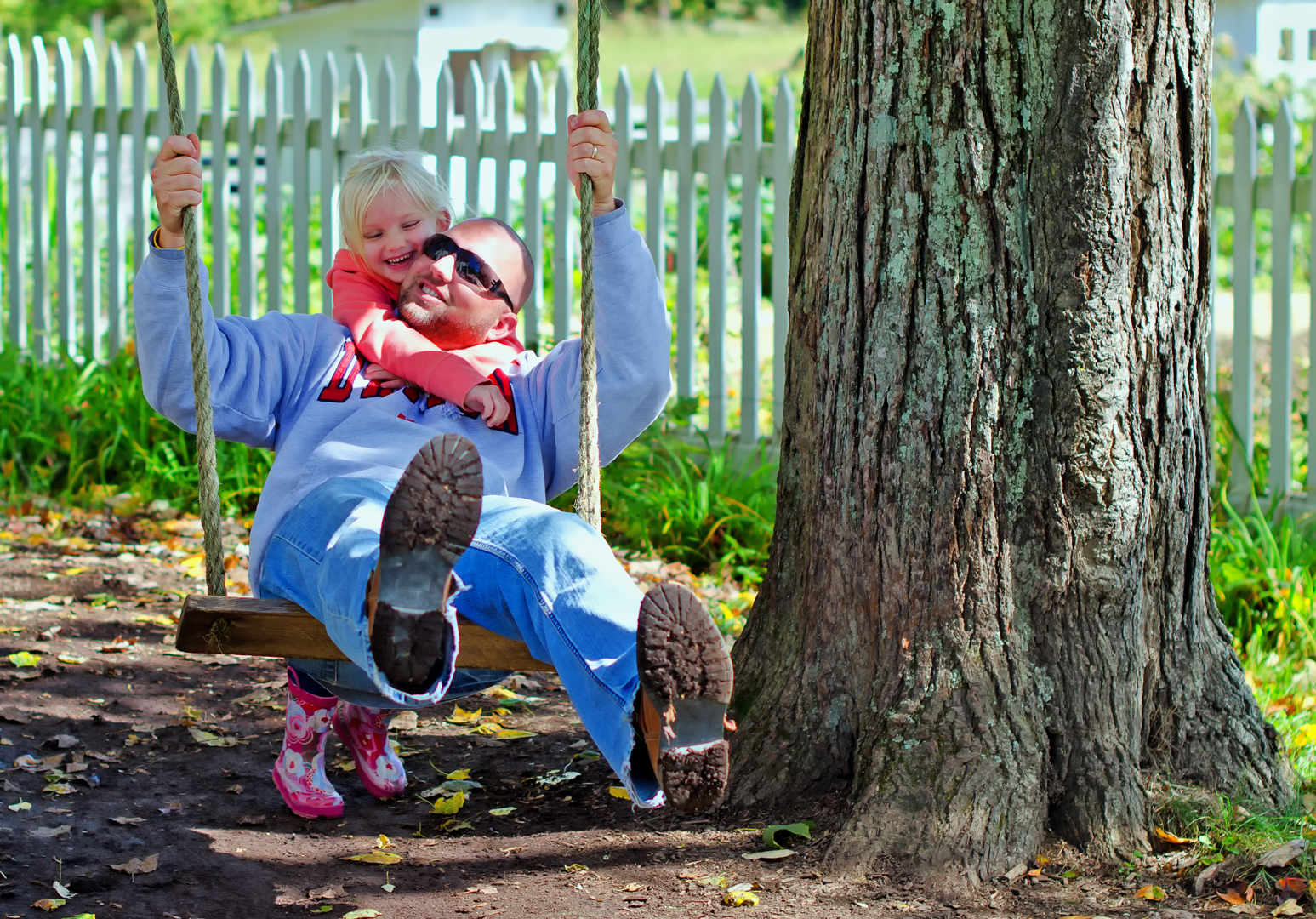
Today, there are only 135 covered bridges in Ohio making it second only to Pennsylvania in numbers. Slate Run’s covered bridge is a picturesque setting for a family photo, a romantic spot to propose and the chance to view a remarkable work of craftsmanship.

One of my favorite memories was a beautiful autumn day. A volunteer asked if we would like some fresh apple cider. Thinking it was prepared ahead of time, we were pleasantly surprised when we watched as the apples were ground & crushed right in front of us. He had given us cups before grinding & we put them right under the spout. You just cannot get any fresher than that! The mash was then taken to the pasture & fed to the cows. Other visits included being there as meals were being prepared, the 1800’s way, to be served to the volunteers. Wonderful place, wonderful people. I miss it terribly bad. Not a native Ohioan, we moved there by choice & consider it our 2nd home state. We had to relocate by necessity. Keep up the excellent work. Hope to see you soon.
Kara, thank you for your lovely comment. We’re so glad you had a wonderful experience at the 1880s farm, of which we’re so very proud.